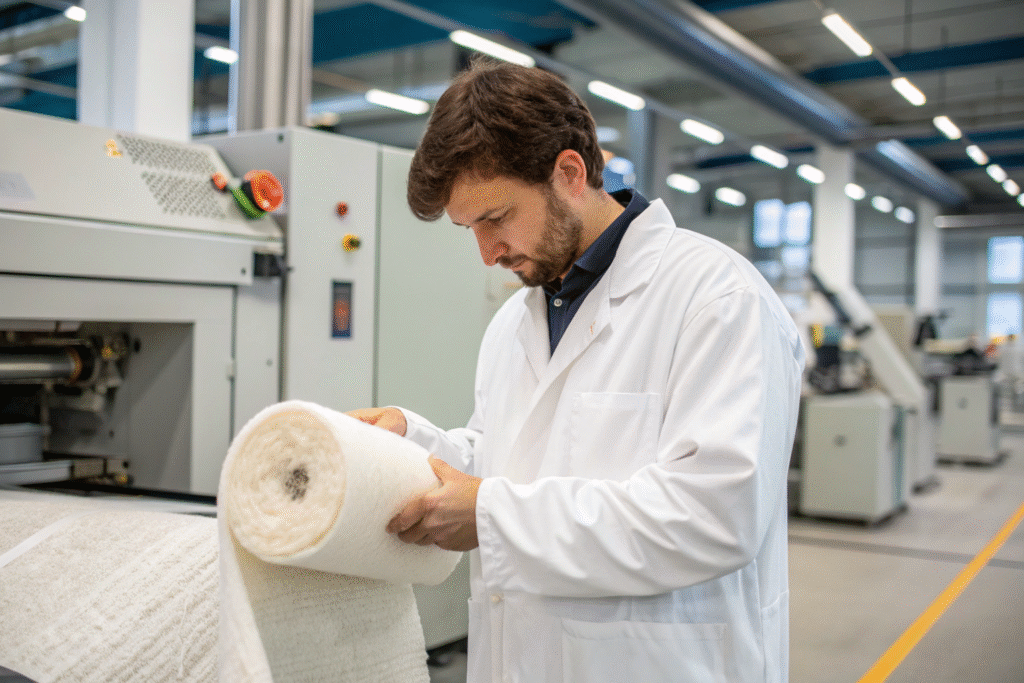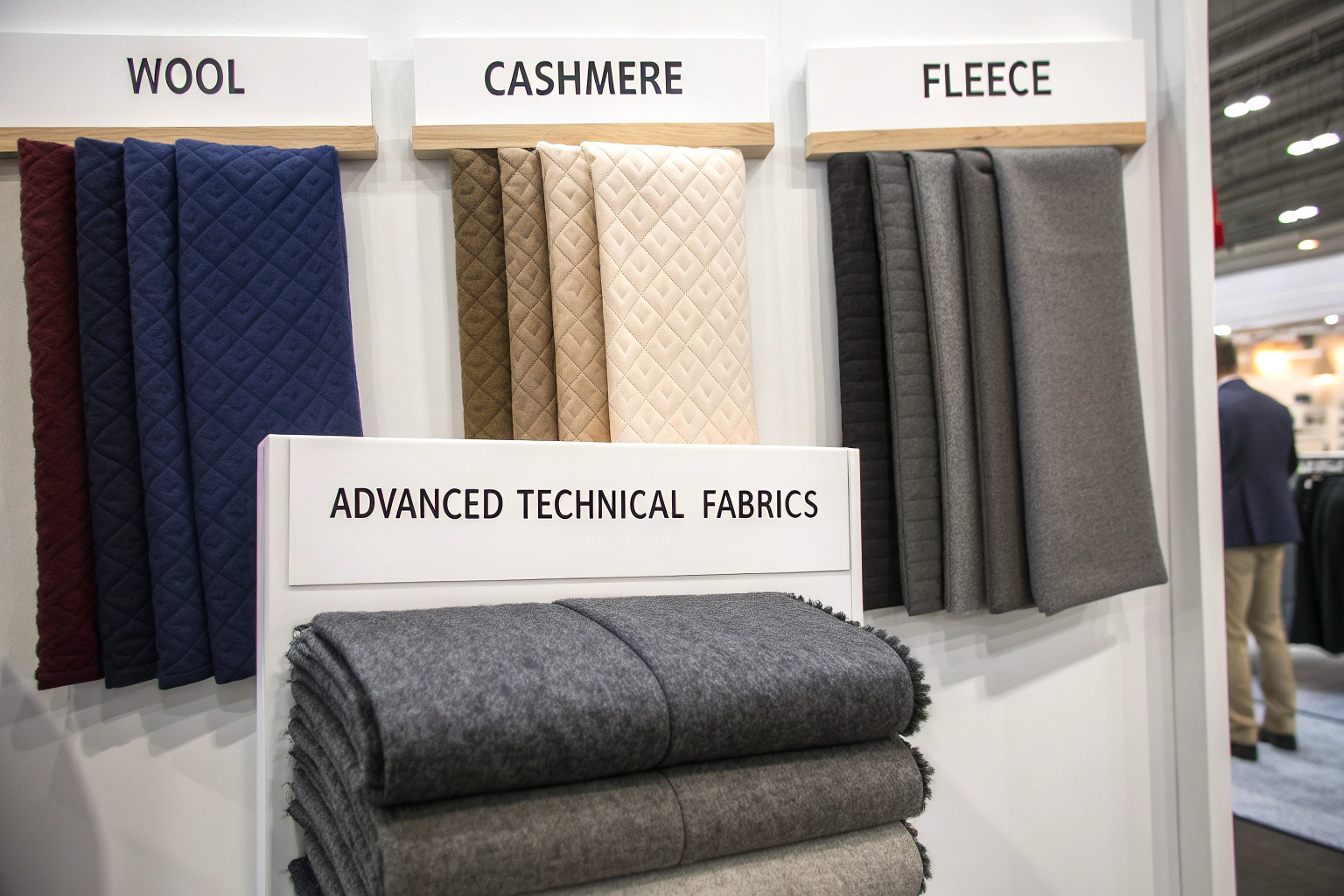As winter approaches, fashion brands and clothing manufacturers must source fabrics that provide genuine warmth, comfort, and performance. The ideal materials balance heat retention, breathability, and durability to ensure customer satisfaction.
The best thermal insulation fabrics include wool, cashmere, high-performance synthetics like fleece, and advanced technical fabrics. These materials effectively trap body heat while managing moisture, making them suitable for everything from heavy coats to lightweight activewear. With over 20 years in the textile industry, we'll guide you through selecting the perfect fabric for your winter collection.
What Are the Top Natural Fiber Insulators?
Natural fibers remain the gold standard for winter wear, prized for their inherent ability to trap heat in tiny air pockets and their biodegradable, sustainable properties.
- Wool is a top contender. Its natural crimp creates excellent heat-trapping air pockets. Remarkably, it can absorb 30% of its weight in moisture without feeling wet, making it highly breathable and odor-resistant. Our wool fabrics are sourced from trusted suppliers and rigorously tested for performance.
- Cashmere offers superior softness and lightweight warmth, providing about three times the insulation of regular sheep's wool. While delicate, modern blending techniques enhance its durability. We specialize in creating custom cashmere blends that balance luxury with practicality.

How Do Wool and Cashmere Compare?
The choice between wool and cashmere often depends on your brand's positioning and the garment's intended use. The table below outlines key differences:
| Property | Wool (Merino) | Cashmere |
|---|---|---|
| Warmth-to-Weight | High | Very High |
| Softness | Good | Excellent |
| Durability | Very Good | Good |
| Moisture Wicking | Excellent | Good |
| Price Point | Mid-range | Premium |
Which Synthetic Fabrics Offer Superior Warmth?
Engineered for specific performance characteristics, synthetic fabrics often outperform natural fibers in harsh, wet conditions. They are essential for active winter wear where moisture management is critical.
- Fleece, primarily made from polyester, is a winter staple. Its thick, napped pile provides excellent insulation even when wet, and it's known for being lightweight and quick-drying. We offer a range of recycled polyester (rPET) fleece, using advanced brushing to maximize heat retention.
- High-Performance Insulators like PrimaLoft® and Thinsulate™ mimic down's insulation but perform reliably even when wet. Our technical fabrics division helps brands integrate these advanced materials for optimal warmth, packability, and weather resistance.

How Do Fabric Blends Enhance Thermal Performance?
Blending fibers creates fabrics that are warmer, more durable, and more functional than single-fiber textiles, representing the smartest approach to modern fabric engineering.
- Wool-Polyester Blends combine wool's natural warmth and breathability with polyester's strength and shrink resistance. Our best-selling winter blend uses Merino wool and recycled polyester, ideal for tailored coats and casual trousers.
- Brushed Cotton-Polyester Blends offer exceptional comfort. The cotton provides softness against the skin, while the polyester adds durability. The brushing process creates a fuzzy, heat-trapping surface. We produce various brushed fabrics to suit different price points.
What Technical Features Boost Fabric Insulation?
Beyond fiber choice, construction techniques and special finishes significantly impact insulation, allowing for enhanced warmth without added bulk.
- Construction Method: Knitted fabrics (e.g., jersey, rib knits) naturally trap more air than wovens. We specialize in heavyweight knitted fabrics for winter. For wovens, techniques like brushing create insulating air pockets.
- Coatings & Finishes: Specialized treatments can dramatically improve performance. We apply durable water repellent (DWR) finishes to prevent moisture saturation and heat loss. Other innovations include metallic coatings to reflect body heat and phase-change materials for temperature regulation.
Conclusion
Selecting the right thermal fabric involves balancing natural warmth, technical performance, sustainability, and cost. From the timeless insulation of wool and cashmere to the rugged reliability of high-tech synthetics and the optimized performance of engineered blends, the optimal choice depends on your specific product needs.
At Fumao Textiles International, we leverage two decades of expertise and the resources of China's largest textile cluster to provide these solutions. We guide you from fabric selection to quality control and logistics. For a direct conversation about your winter collection, please contact our Business Director, Elaine, at elaine@fumaoclothing.com. Let's create winter wear your customers will love.










